Today we’re taking a quick look at Nvidia’s GeForce RTX 3070 Ti Laptop GPU, the second of two new GPU refreshes for 2022 mobile gaming systems. We already covered the RTX 3080 Ti, so in this review we’ll see how the more mainstream tier model compares to Nvidia’s flagship along the rest of the laptop GPU landscape across a range of games.
The RTX 3070 Ti is based on Nvidia’s Ampere GA104 silicon. It increases the number of SMs from 40 in the older RTX 3070, up to 46 with the Ti model, getting very close to the full 48 SMs available with the RTX 3080 Laptop GPU. This brings with it 5888 CUDA cores.
However, to fit this larger core count into the same 80-125W power range, clock speeds have been reduced down to a maximum of 1485 MHz rated boost in the 125W configuration. The memory subsystem, offering 8 GB of GDDR6 clocked up to 14 Gbps, remains identical to the RTX 3070.
On paper, the RTX 3070 Ti Laptop sits between the RTX 3080 and 3070 as you’d expect, getting very close to the 3080 in terms of core configuration, but featuring power options in line with the 3070.
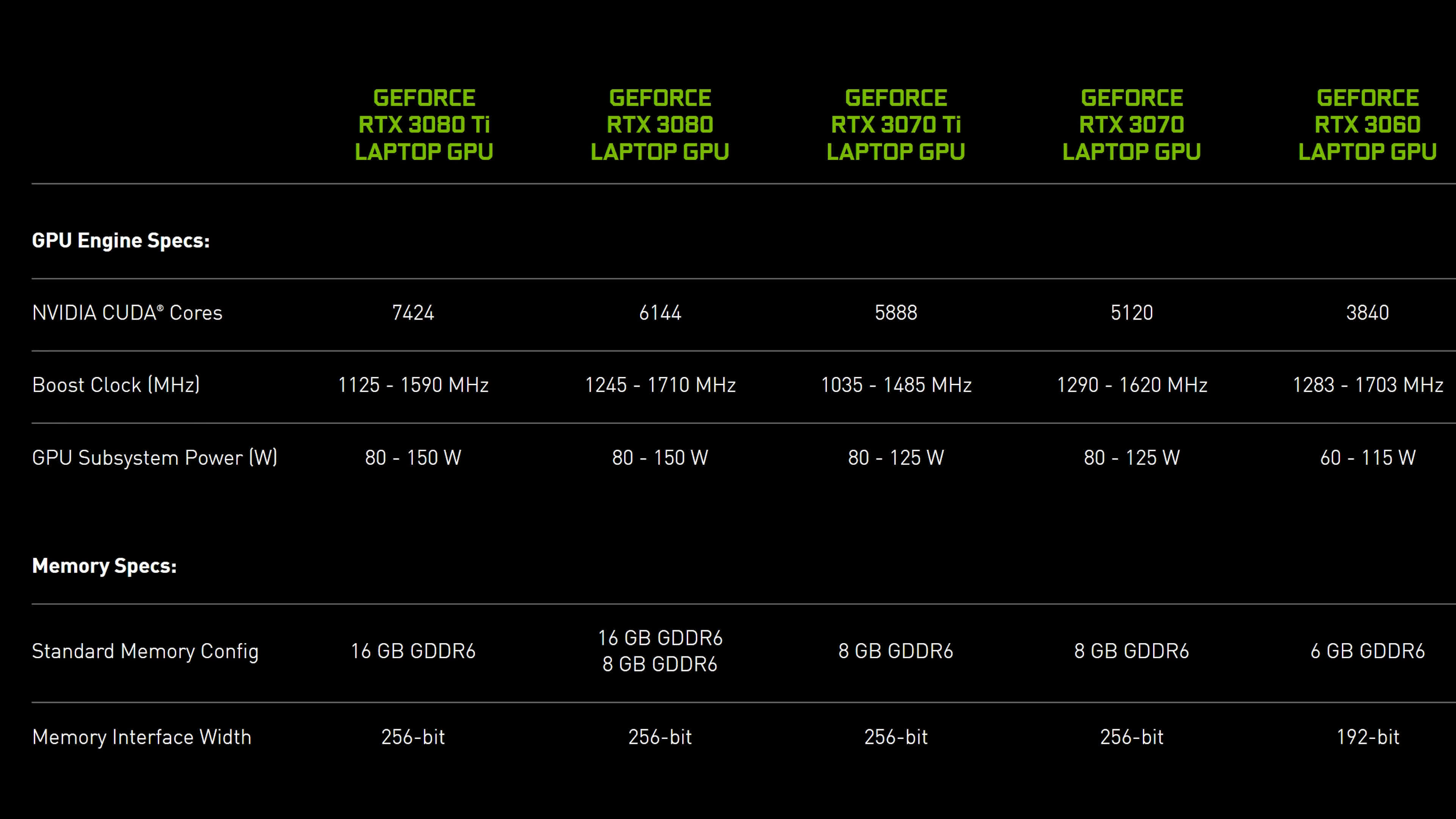
It’s also important to note the laptop 3070 Ti GPU is not the same as the desktop card: the desktop model has 2 more SMs, higher clock speeds, and faster GDDR6X memory. Because the desktop card is not as power constrained, it will perform a lot better.
The test platform for today’s review was provided by XMG and their partner Uniwill. The GM5AG7Y chassis we have on hand features a 15-inch 1440p 240Hz display, an Intel Core i7-12700H processor and 32GB of DDR5 memory in a dual-stick configuration.
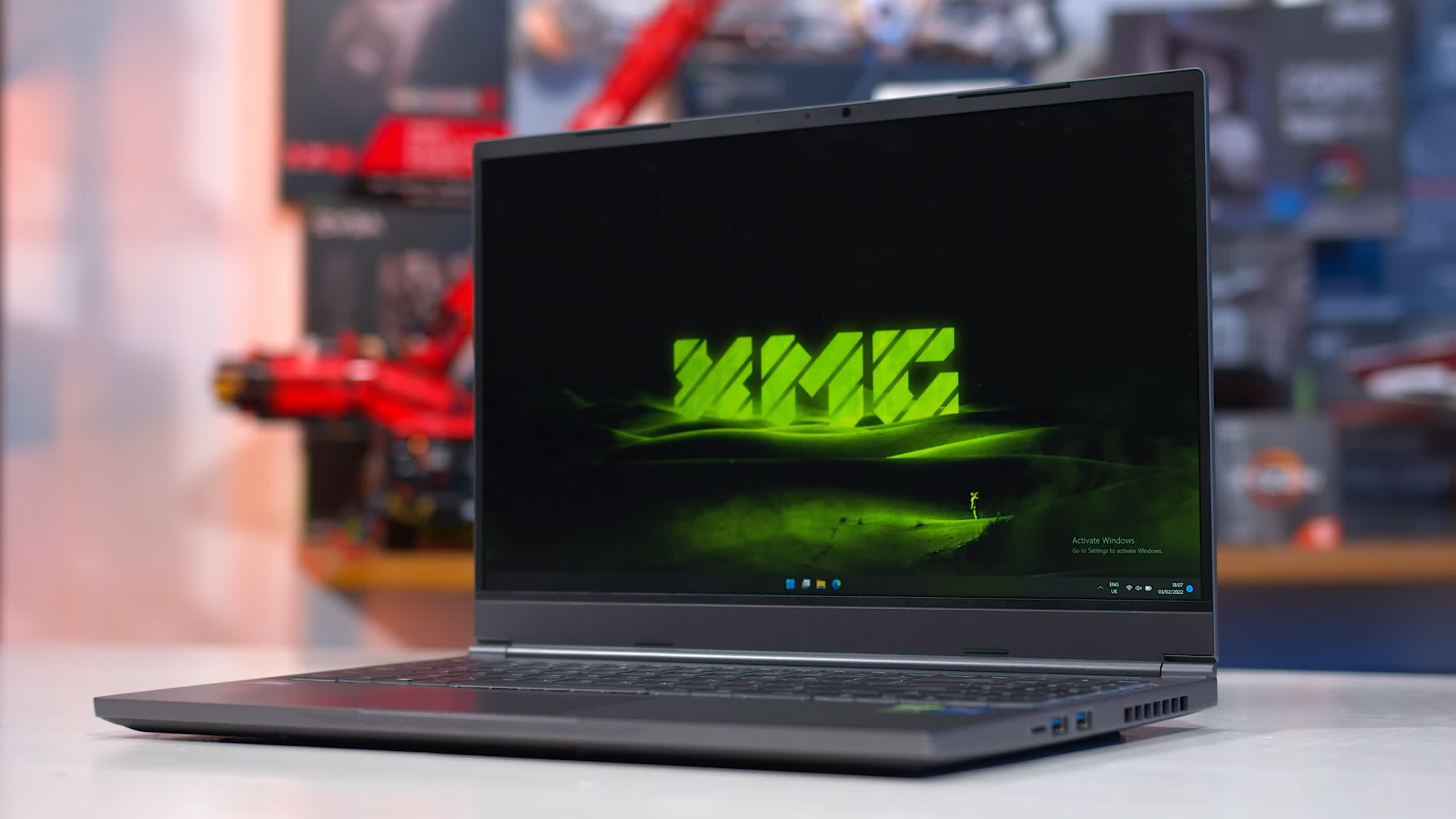
The RTX 3070 Ti is configured at the maximum power rating as offered by Nvidia, that’s 125W plus 5W of Dynamic Boost. To be clear, there are multiple configurations of the RTX 3070 Ti that will all have the same advertised name, but different power limits.
An 80W configuration in a slimmer, smaller laptop will be significantly slower than the results we show today, which are representative of higher power laptops that have more cooling capacity and usually are not as svelte or lightweight.
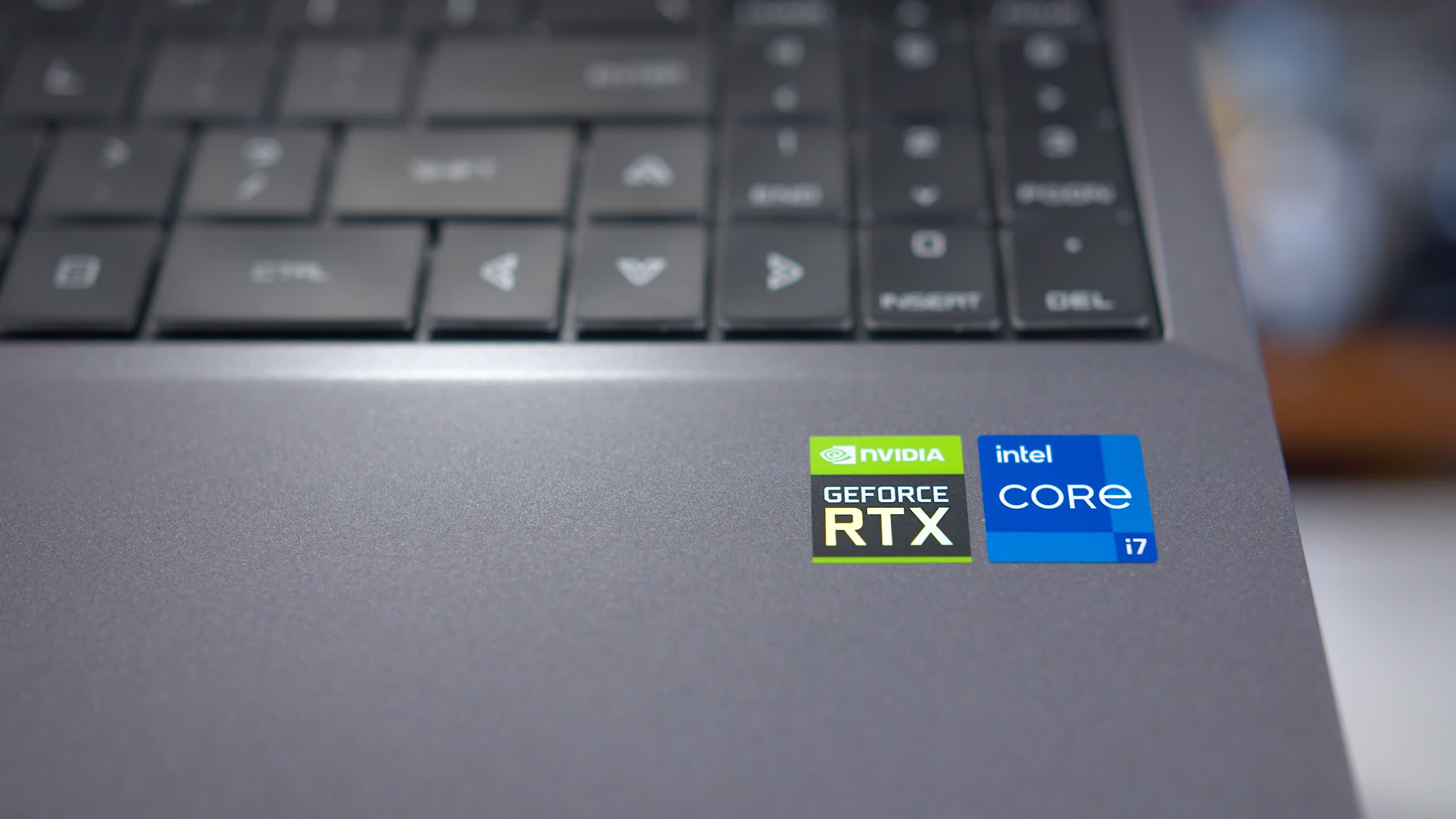
For testing, we’ll be benchmarking and comparing GPUs at 1080p, with the display connected to the iGPU. This is the most limited configuration and is how many laptops are run in a hybrid or Optimus mode. Then we also have 1440p results with the GPU connected directly to the display, which is the most GPU limited and representative of laptops with a mux switch or external display use.
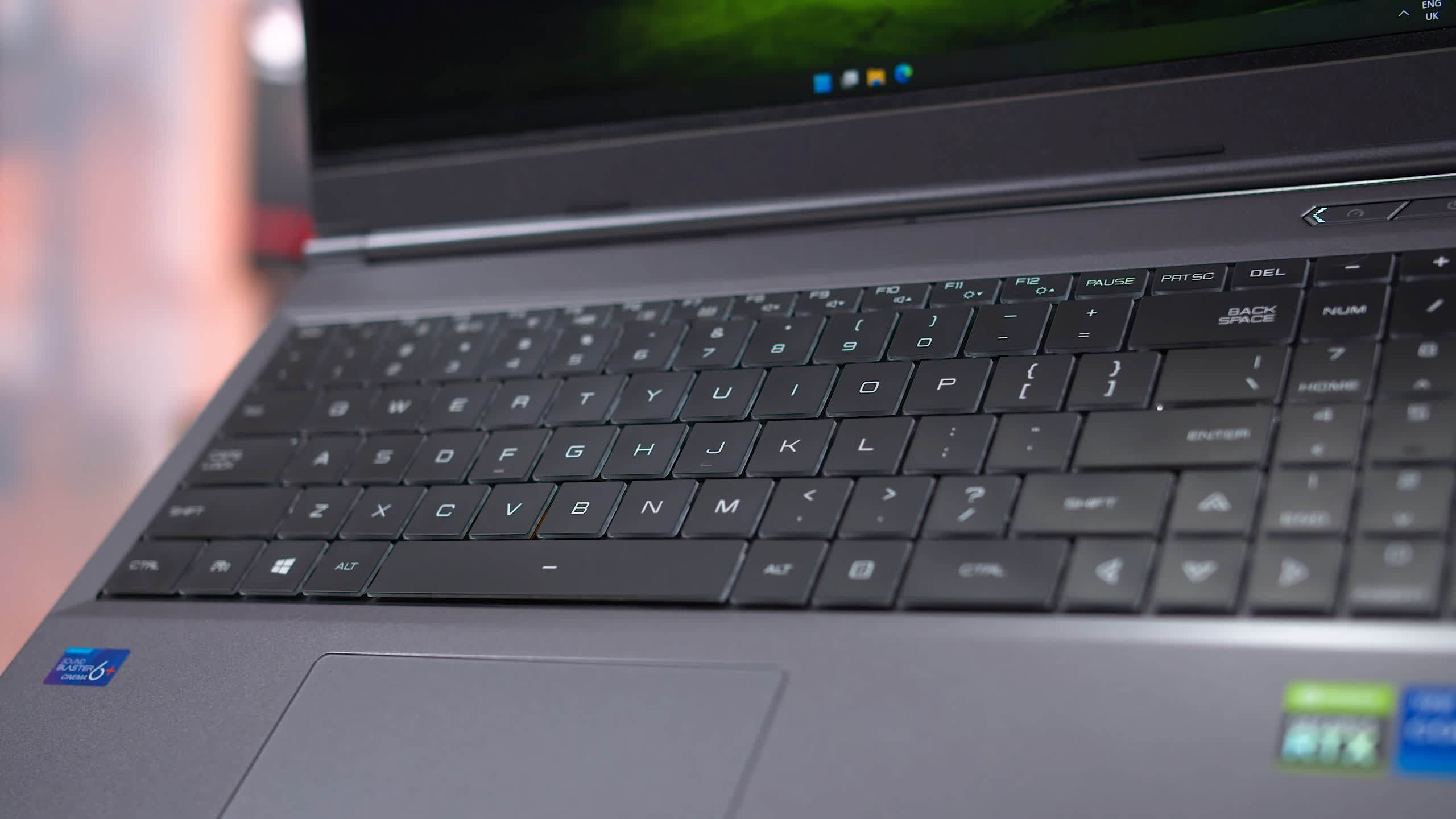
Gaming Benchmarks
We’re going to kick off the testing with Watch Dogs Legion. This game performs really well on the 3070 Ti at 1080p using ultra settings, outperforming the RTX 3080 by a few percent, though still sitting 8% behind the new 3080 Ti.
In total, we’re seeing 16 percent better performance than the 115-130W configuration of the RTX 3070, which has essentially shifted this class of laptop up a tier compared to the previous generation, giving us a more comfortable buffer above 60 FPS on average.


At 1440p, the results aren’t as favorable for the 3070 Ti, with the new model now slipping a few percent behind the RTX 3080 and much closer to the previous-generation RTX 3070. However the gap to the 3080 Ti remains similar at a 10 percent deficit, so among this grouping of higher end GPUs it’s quite a close battle between the various options and you can’t really go wrong for this game.

Like with the 3080 Ti vs 3080, the RTX 3070 Ti struggles a little compared to the 3070 in Metro Exodus. Average performance with the configurations we tested was roughly the same, but 1% low performance was a bit behind at 1080p. The 3070 Ti ended up 6 percent slower than the 3080 Ti in this game using Ultra settings.

And the situation doesn’t really change all that much when benchmarking at 1440p using an external display. The 3070 Ti and 3070 are still very close in overall performance, with the 3070 Ti just marginally behind. Meanwhile the gap to the 3080 Ti has grown somewhat, now sitting 9 percent behind Nvidia’s flagship tier of laptop GPUs. Unfortunately the new Ti model isn’t offering much here.

Red Dead Redemption 2 is a good result for the 3070 Ti, coming in only a few FPS behind the RTX 3080 Laptop and RX 6800M from AMD on average. At 1080p the new Ti model was 11 percent faster than the non-Ti model from last year, and just 3 percent slower than the 3080. However with a 12% gap to the 3080 Ti, you’re not quite getting flagship levels of performance here.

At 1440p, the 3070 Ti sits a lot closer to the 3070 than the 3080 and 3080 Ti. It’s only 5 percent faster than the older 3070 model, and 14% behind the 3080 Ti. This GPU is still very capable of playing RDR2 at 1440p though, easily achieving a 60 FPS average using High settings.

In Cyberpunk 2077, the new 3070 Ti is faster than the RTX 3070, claiming a 5% margin at 1080p. Like in Red Dead, there’s roughly a 12 percent gap to the higher RTX 3080 Ti which in this title is about a 10 FPS difference, not earth shattering but enough of a gap so that the 3080 Ti makes sense. But on the other hand you can see a sizable gap when comparing the 3070 Ti to the 3060 so there’s various ways to look at this result.

At 1440p though, the 3070 Ti is a lot less impressive only able to match the 3070 in overall performance. It doesn’t fall behind like we see when comparing the 3080 Ti to the 3080, but I would have expected to see a performance gain with this new laptop model.

In Horizon Zero Dawn the 3070 Ti is decently faster than the 3070 and this is one of the largest margins we’ve seen so far: 16 percent in favor of the new model. It’s still slower than the 3080 Ti to the tune of 12 percent, but this appears to be a game that scales well to the higher CUDA core count available with the 3070 Ti.

And while the margin between various GPUs tends to shrink at 1440p, the 3070 Ti is still 11 percent head of the 3070 in this game. However it doesn’t close the gap much to the 3080 and 3080 Ti configurations, with those GPUs benefiting from a higher maximum allowed power configuration of 150W, vs just 125W for the 3070 Ti.

With this generation of laptops, you’re generally going to be getting both a GPU and CPU upgrade, and this is evident in a couple of games like Hitman 3. Using the Dubai benchmark at 1080p, the 3070 Ti configuration is significantly faster than previous models, 28% faster when paired with the Core i7-12700H compared to the RTX 3070 with Ryzen 9 5900HX. This is a combination of both CPU and GPU performance gains, helping to alleviate the bottleneck at high framerates while also delivering more GPU headroom.

As you can see this margin falls away significantly when comparing at 1440p, which is less CPU limited. It’s still a great result for the 3070 Ti, 14% faster than the 3070, but the margin to the 3080 Ti using the same 12700H CPU is no different to other games we’ve looked at.


Similar story when looking at Rainbow Six Siege, the game is fully CPU limited at 1080p but when we focus exclusively on 1440p numbers we see the 3070 Ti fall pretty comfortably between the 3070 and 3080 configurations. The 3070 Ti is able to crank out over 240 FPS using medium settings in this title, which is perfect for the latest generation of 1440p 240Hz laptop panels.

The rest of the benchmarks we’re showing are using new data we’ve collected over the last few months, so we’re going to focus on the GPU limited 1440p results because they make the most sense for this class of GPU.
Kicking off this section is Assassin’s Creed Valhalla, we had to throw out our old data for this game as Ubisoft released a major update that significantly improved performance on Nvidia GPUs. In this title there’s not much of a gap between the 3070 Ti and 3080 Ti, so my recommendation would be to get the 3070 Ti if you’re a big Valhalla player.

In Far Cry 6 the 3070 Ti ends up 9 percent behind the 3080 Ti, but either configuration is good for over 60 FPS on average using Ultra settings. The 8GB VRAM buffer is right on the edge with this title using the HD Texture Pack, so ideally the 3070 Ti would include more VRAM for 1440p gaming, but most of the time this isn’t a significant issue.

In Guardians of the Galaxy, the 3070 Ti is a strong performer, offering over 100 FPS on average. It does end up 12 percent slower than the RTX 3080 Ti, but this is a very common performance margin between these GPUs. If you’re really keen you can enable DLSS to further improve performance.

Deathloop is another title where there’s about a 10 FPS gap between the 3070 Ti and 3080 Ti when playing at 1440p. Both GPUs are capable of a 60 FPS experience using Ultra settings at this resolution though which is very much a high end experience on a laptop.

Forza Horizon 5 was a bit of a surprise, as the performance delta between the 3070 Ti and 3080 Ti configuration is quite small, most similar to what was seen in Assassin’s Creed Valhalla. I’m not too sure why this would be the case, but I triple checked the results and this same small margin came up each time, and I don’t believe it’s a CPU limitation. Might be due to some other aspect of the design.

Resident Evil Village showcases the 10 FPS margin between the 3080 Ti and 3070 Ti once again, although in this instance the percentage difference sees the 3070 Ti end up 9 percent slower. There’s probably not too much point detailing more games as we’ve seen this sort of margin on more than one occasion, so let’s finish off the review with a look at ray tracing performance.

Far Cry 6 uses fairly modest ray tracing effects which are easy to run on most GPUs. In the case of the RTX 3070 Ti, even when we continue using the Ultra preset and turn on all the ray tracing effects, the GPU is still capable of over a 60 FPS average and that’s without using image scaling techniques like FSR. We’re only 8 percent slower than the 3080 Ti, too, which isn’t too bad.

Guardians of the Galaxy ray tracing isn’t so favorable, using the maximum ray tracing effects in conjunction with the Ultra preset leads to an average frame rate below 60 FPS, 15 percent slower than the RTX 3080 Ti. However as mentioned previously, this game supports DLSS, so when using the Quality mode it’s quite easy to get that frame rate back up over 60 FPS with only a small loss to visual quality (which is especially hard to spot on a laptop-size display)

Lastly, we have Deathloop, a game with ray traced shadows. Decent results on show in this game as well, with the 3070 Ti keeping its average frame rate up over 60 FPS without using DLSS or FSR. However, the performance delta to the 3080 Ti is rather large, so for the best experience you might want to consider Nvidia’s top of the line GPU.
How Fast is this Laptop GPU?
From a standalone performance perspective, the RTX 3070 Ti Laptop GPU performs quite well, and is well suited to the latest generation of laptops with 1440p displays. Even when gaming using ultra settings, or with ray tracing enabled, the RTX 3070 Ti is capable of a ~60 FPS experience or better, across a variety of titles, which we think is very decent for a laptop GPU.
Compared to other GPUs, there’s a few good things and a few disappointing things.
On the positive side, the 3070 Ti is able to close the gap to Nvidia’s best laptop GPU, relative to previous generations. With the 3080 vs 3070 we were getting about a 20% margin at 1440p. That has dropped to just a 12 percent margin when comparing 3080 Ti vs 3070 Ti, albeit with a different selection of games.
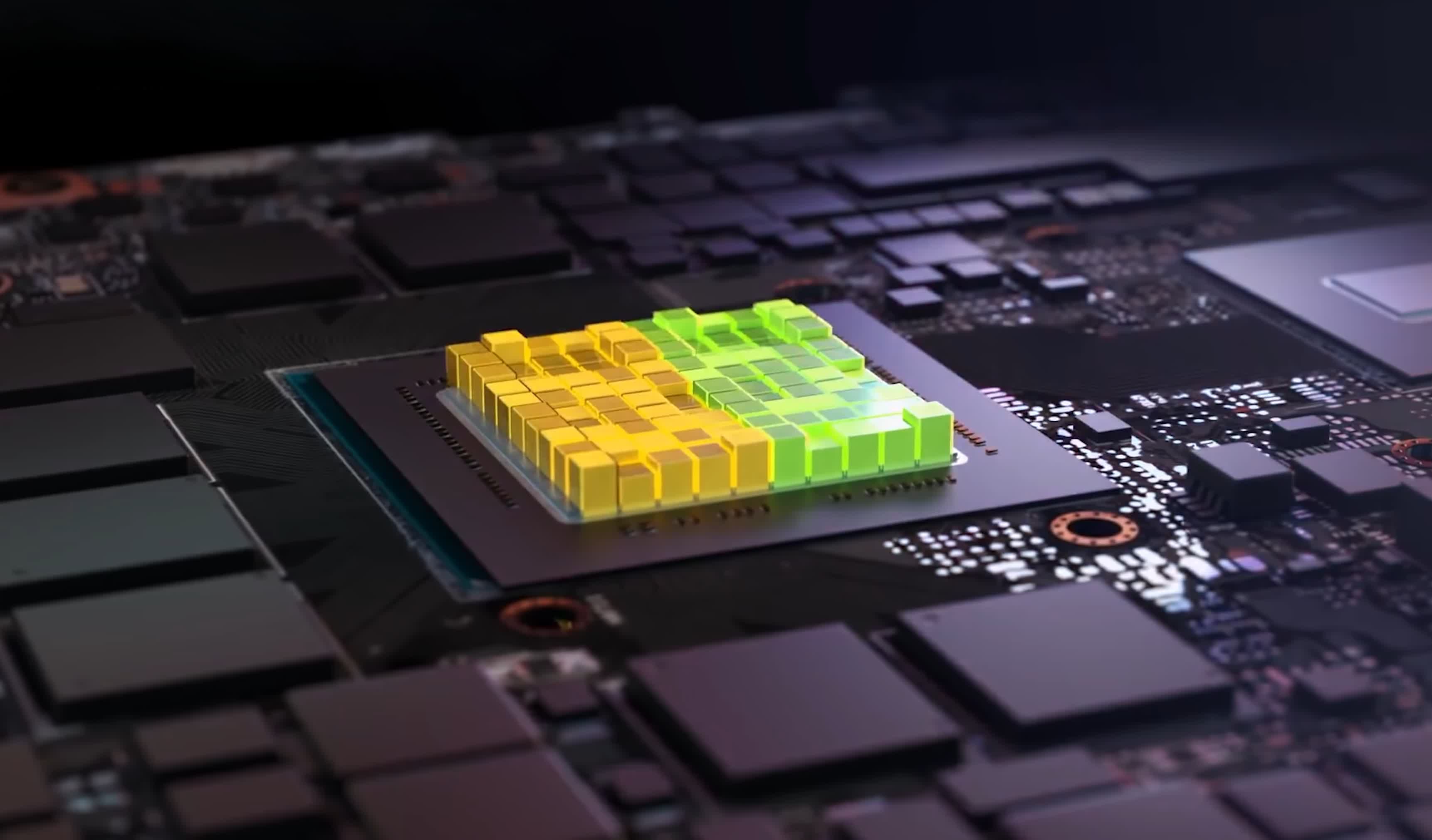
A lot of this is down to the 3080 Ti being an unimpressive upgrade on the 3080, while the 3070 Ti is slightly better in that area. But we say slightly for a reason: the RTX 3070 Ti is hardly an earth-shattering upgrade on the RTX 3070 that came before it. It’s a little over 10 percent faster at 1080p, and a little under 10 percent faster at 1440p.
As is always the case with laptops, the value equation is tricky to pin down as we’re looking across different generations and the way GPUs are configured by each manufacturer and paired with different CPUs, displays, and so on. Nvidia claims that the RTX 3070 Ti should start in $1,500 laptops, versus $1,300 for the RTX 3070, $2,000 for the RTX 3080, and $2,500 for the RTX 3080 Ti.
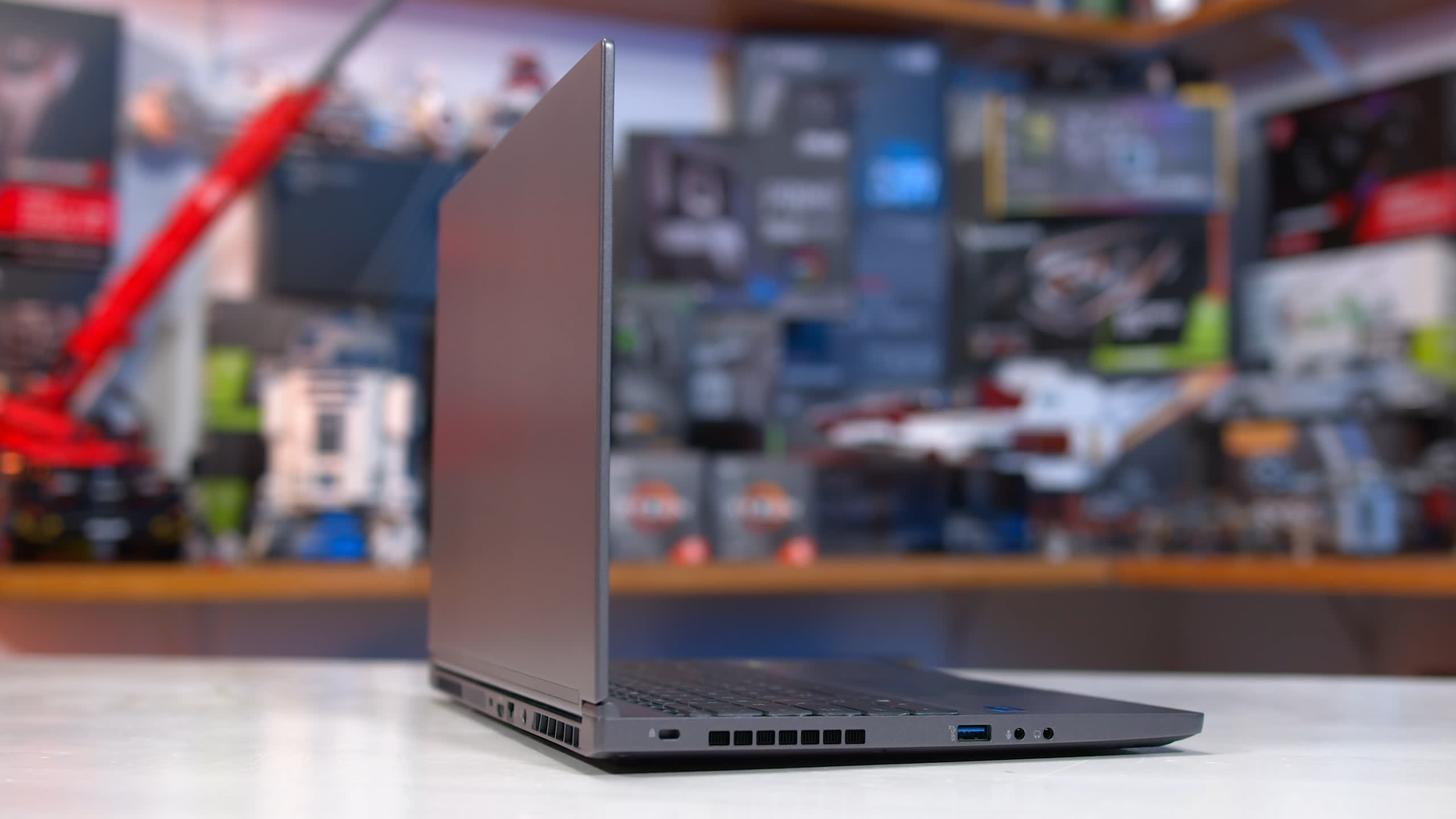
At these “MSRPs,” it’s an absolute no brainer to go with the 3070 Ti over the 3080 and 3080 Ti. It’s only 10 percent slower or so, for at least 25% less cash. The 3080 Ti looks like a particularly horrible value going on Nvidia’s numbers, and a quick check of real world laptop pricing confirms this to be the case.
It’s harder to make a recommendation between the 3070 Ti and 3070. Nvidia says 3070 Ti laptops should be 15% more expensive, but we wouldn’t want to pay anything over 10% more for a pure gaming system. To justify a larger margin, we’d also be wanting a faster CPU, more storage space or some other system configuration upgrade.
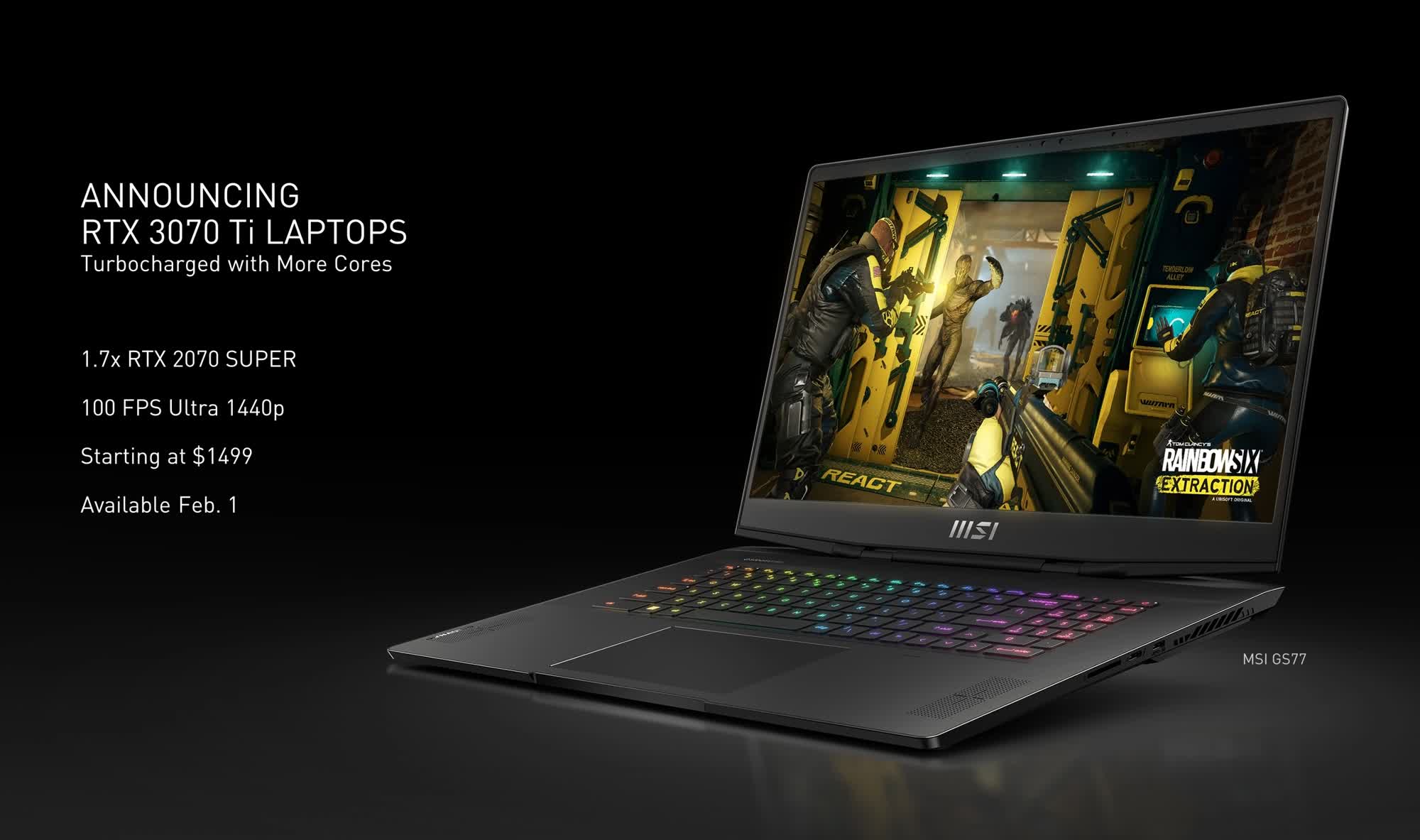
There’s also AMD GPUs to consider. The nearest competitor we’ve tested is the Radeon RX 6800M and we’re set to get a refreshed line of 6000M series GPUs soon-ish. The 6800M is now only available in prev-gen laptops at this point, but it is a fair bit cheaper than 3070 Ti models. Nvidia does have superior ray tracing performance and DLSS in their favor, but AMD’s pricing is pretty aggressive as a result, so they’re not to be immediately discarded.
Shopping Shortcuts
- GeForce RTX 3070 Ti Laptops on Amazon
- Intel Core i7-12700H Laptops on Amazon
- GeForce RTX 3080 Ti Laptops on Amazon
- AMD Radeon RX 6800M Laptops on Amazon
- AMD Ryzen 9 6900HS Laptops on Amazon
- GeForce RTX 3060 Laptops on Amazon
- GeForce RTX 3070 Laptops on Amazon

